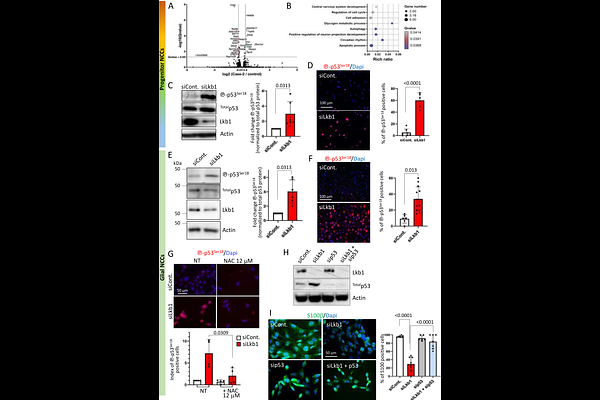The metabolic kinase LKB1 shapes the enteric nervous system bymitigating the oxidative stress and p53 activity

The metabolic kinase LKB1 shapes the enteric nervous system bymitigating the oxidative stress and p53 activity
Lucas, A.; Appaix, F.; Allard, J.; Mevel-Aliset, M.; Radu, A. G.; Fauvelle, F.; Favier, B.; Grichine, A.; Maurer, J.; Hainaut, P.; Attardi, L. D.; Billaud, M.; Torch, S.; Thibert, C.
AbstractThe enteric nervous system (ENS) comprises ganglia of neurons and glial cells derived from migratory multipotent neural crest cells. While the molecular mechanisms of ENS development are well-studied, the involvement of metabolic processes has received less attention. We previously showed that the tumor suppressor kinase LKB1 is essential for the trophic maintenance of postnatal ENS. Here we examined LKB1 role in ENS formation using a genetically engineered mouse model that conditionally inactivates Lkb1 in neural crest progenitors during gut invasion. We conducted a comprehensive phenotyping of the ENS through histology and 3D imaging of cleared tissue, combining lightsheet microscopy with adaptive optics confocal microscopy. We found that Lkb1 loss impairs early neuronal differentiation, followed by glial degeneration, leading to hypoganglionosis and compromised digestive tissue integrity. Metabolite profiling of digestive tracts revealed an increase of oxidative stress upon Lkb1 ablation. In vitro, Lkb1 knockdown induced oxidative stress in neural crest progenitors and their glial derivatives, causing DNA damage and p53 activation. Ablation of p53 rescued glial specification under these conditions. In vivo, hyperphosphorylation of p53 was also observed; however, deletion of p53 alleles in Lkb1 mutants did not restore enteric neurons number. Instead, it improved axonal fiber organization and partially rescued digestive tissue integrity. These findings establish LKB1 as a key metabolic regulator on both the development and maintenance of the ENS, suggesting that aberrant LKB1 signaling may contribute to human enteric glioneuropathies.